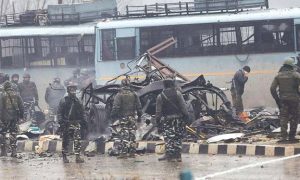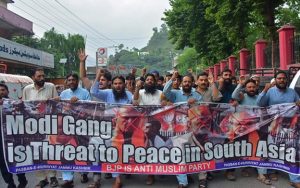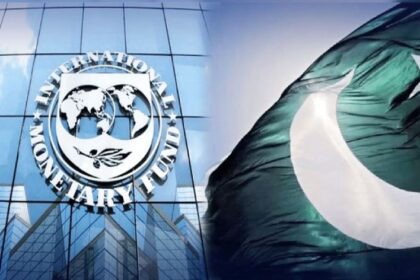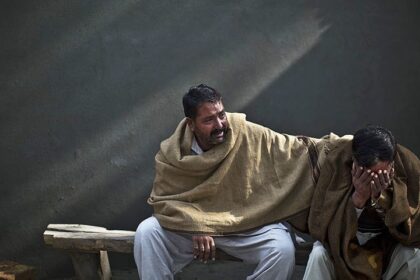“…Tactics without strategy is the noise before defeat.”
~ Sun Tzu
As the MiG-21 crashed into Azad Kashmir and jubilations greeted the DGISPR’s statement on the capture of Wing Commander Abhinandan, the mood in Islamabad was one of triumph. Operation Swift Retort was a success; Indian aggression on the 26th of February had been retaliated against, the Pakistani Air Force demonstrated credible deterrence and local tactical superiority, and the political-military leadership of the time showed a synchronized crisis-management front. Pakistan came out looking like the mature actor in the entire affair. It was a cause for celebration… yet also the first stage of strategic defeat.
Changing the Status Quo: India’s Strategic Shift
The Pulwama attack on the 14th of February against a convoy of CRPF personnel left 40 dead; a Jaish-e-Muhammad (JeM)-affiliated member, Adil Ahmad Dar, had attacked the force with a suicide VBIED, the largest security-related incident in Indian-occupied Kashmir yet. The subsequent retaliatory airstrikes in Balakot and air skirmishes the next day, however, resulted in tactical Indian losses and demonstrated a failure to inflict harm on either Pakistani military assets or, indeed, JeM infrastructure. Pakistan was thus declared the winner in this latest tussle between the two rival states. Yet, the Indians, operational failure notwithstanding, were successful in one critical aspect: they had permanently changed the status quo ante bellum. Now, any major attack in territory perceived to be Indian would result in direct retaliatory airstrikes rather than just increased artillery strikes and infantry incursions along the LoC, a long-established practice in the disputed region.

As a result, the stakes have increased, and the chances of war are more likely in every subsequent incident. The actors involved responded to these new dynamics. Developments on the Pakistani side made this obvious. Militant groups decreased their reported attacks, and a concerted effort was made to rein in Kashmir-focused jihadist groups. The Indians, noting this shift, pushed forward to turn this new status quo into a strategic victory.
The Shift in India’s Approach and Pakistan’s Response
This came with the abolishment of Articles 370 and 35A, two provisions granting the Indian side of Kashmir legal autonomy and land ownership rights. Thousands of new security forces were sent to the occupied lands, telecommunications were severed for months, and countless Kashmiri activists, political workers, leaders, and ordinary civilians were arrested and detained, some still missing to this day. All of this was in the bid to forcibly integrate the Kashmir Valley into India, its autonomy stripped, and its people broken; a long-standing demand by Hindutva leaders and thinkers was finally fulfilled by the BJP. Why it finally came in 2019 rather than earlier is clear as day. The Modi government had cruised into electoral victory by using Pulwama and garnered the domestic will to carry out what it touted as “reforms.” Yet, more importantly, it had established a new strategic reality which constrained Islamabad.

Islamabad’s reaction to these developments was a flurry of diplomatic and verbal condemnations. Army Chief Qamar Javed Bajwa affirmed Pakistan’s support for Kashmir and promised that the country’s military would “go to any extent” in pursuit of such goals. The then-Prime Minister of the country, Imran Khan, launched a furious media and diplomatic blitz both nationally and internationally, accusing India of destabilizing the region and engineering demographic change in the Muslim-majority valley. Yet, despite these dire warnings and threats, curiously, not much happened on the ground, and in fact, Pakistani authorities seemed to be taking the opposite approach. Rather than supporting Kashmiri freedom fighters or pro-liberation forces in Azad Jammu and Kashmir (AJK), they opted for restraint. PM Khan appealed to people in AJK to not cross the LoC or take up arms. Militant supporters and sympathizers complained about disruptions in their operations, and the Pakistani military, contrary to the dire mood constructed and propagated through propaganda channels, seemed in no mood to escalate. For India, the reason was obvious: Pakistani authorities feared that any major attack in Indian-controlled territory would spark a wider skirmish, one that couldn’t be contained like Pulwama.

Thus, New Delhi, emboldened, continued its efforts in Kashmir, confident that Pakistan was blowing hot air and the strategic balance was in their favor. And indeed, the strategic balance continued to tip in India’s favor. As Pakistan slid into economic and political turmoil, the prospects of Islamabad doing anything seriously quickly diminished in the face of the new paradigm: Indian military retaliation to any major security incident. Recognizing the new reality, Islamabad signed an LoC ceasefire deal in 2021. Rumored backdoor talks started in Dubai between ISI and RAW officials, while the then-Army Chief, Qamar Javed Bajwa, explicitly admitted that the military was in no position to fight a protracted war with India. Though Pakistan sought to create some leverage by supporting newly “nationalist” resistance groups in Indian-occupied Kashmir—the resistance front, the People’s Anti-Fascist Front, the Kashmir Tigers, the Ghazi Force, etc.—who started increasing attacks after 2020, the frequency wasn’t enough to change or pressurize New Delhi. In fact, the Indian intelligence agencies started a protracted covert assassination campaign in Pakistan, killing over 20 people, the most audacious being the killing of Muhammad Riaz, an ex-JEM member, in a mosque in Rawalakot, Azad Kashmir. Any equivalent action by Pakistani intelligence agencies was not forthcoming.
Pakistan’s Changing Focus: A Strategic Shift

India thus unilaterally changed the strategic picture of Kashmir. The solution was already presupposed and revealed by the Indians, with New Delhi simply expecting Islamabad to accept it. Full integration of the valley is ongoing, with demographic change and economic exploitation expected. Meanwhile, unrest in the Pakistani side of Kashmir and Gilgit-Baltistan is increasing, partly because of incompetent administration and decades of bureaucratic arrogance, and partly, no doubt, because of Indian influence operations seeking to exploit and inflame genuine grievances against the Pakistani state.
Pakistan, in reaction to this changing picture, seems uninterested in the Kashmir question. Condemnations have become a monotonous routine rather than an impassioned rallying cry like decades before. Issues with Afghanistan, the economy, and internal politics have taken precedence over a dispute with a foregone conclusion now.
Six years ago, Pakistan celebrated victory. Today, it faces strategic defeat.

















